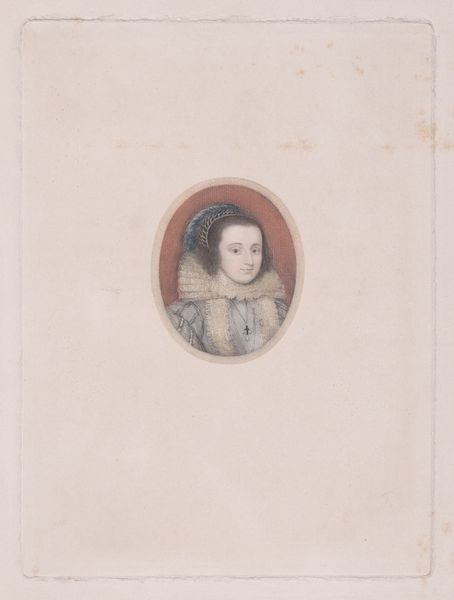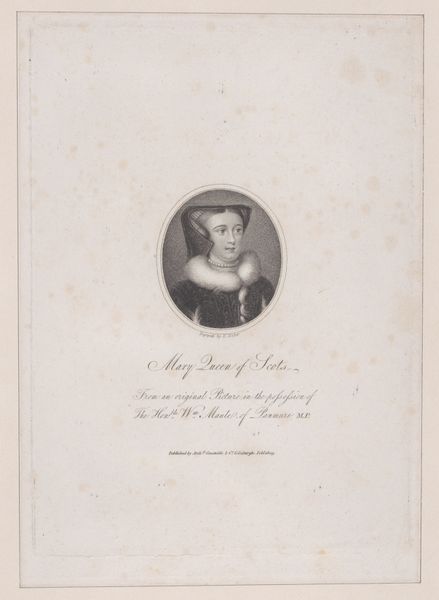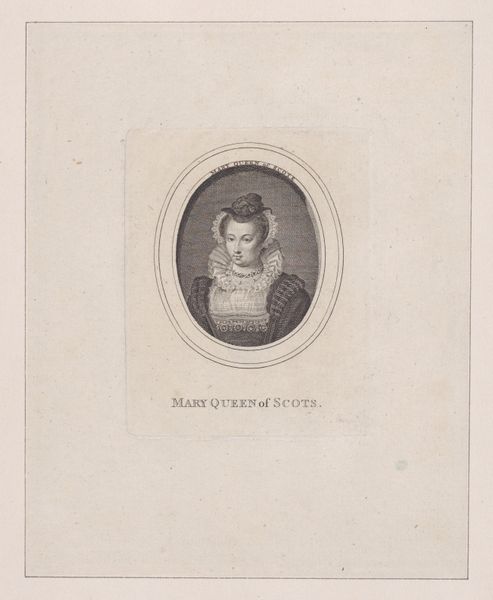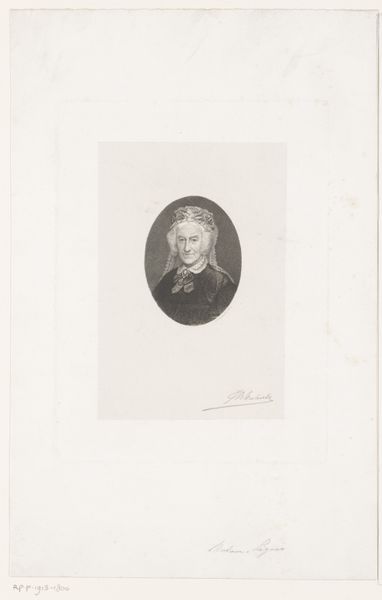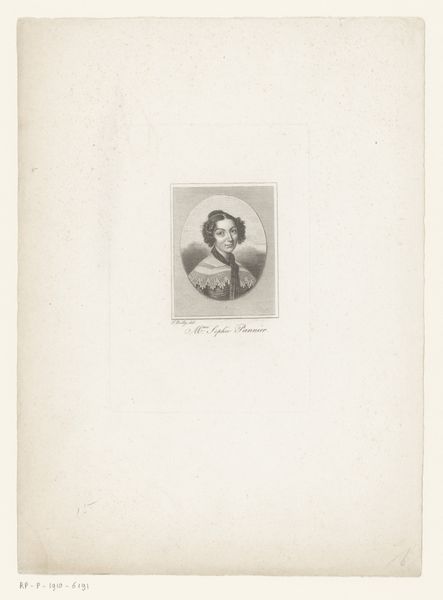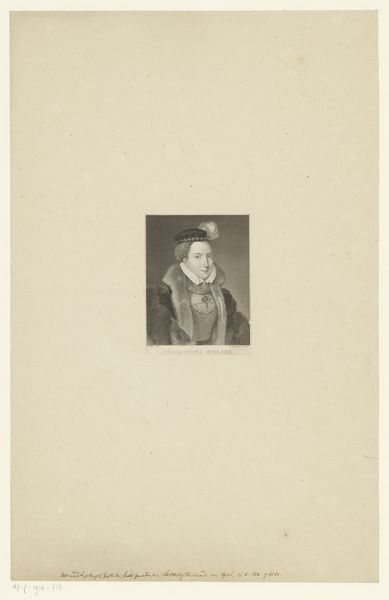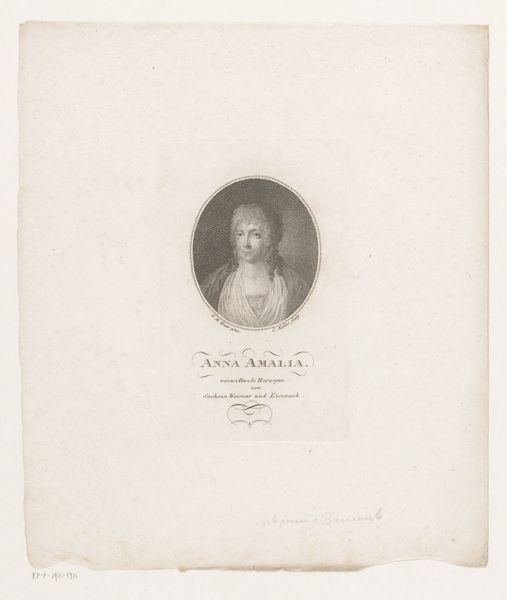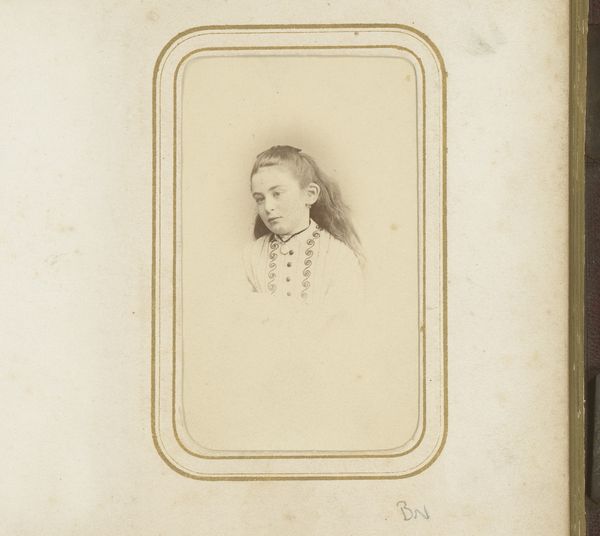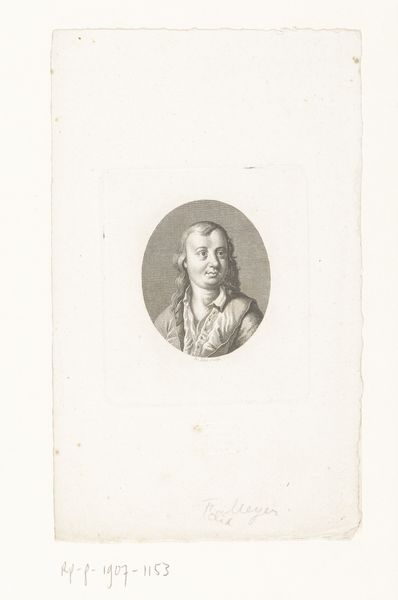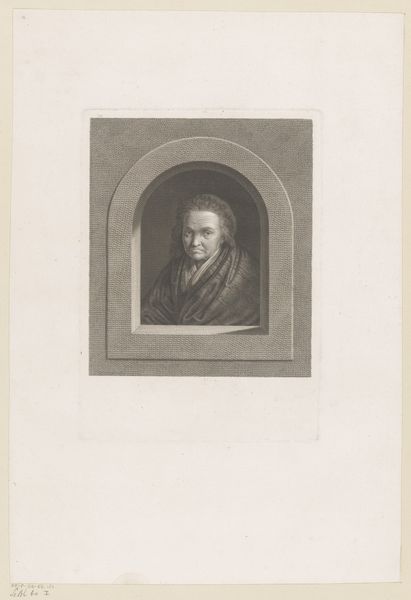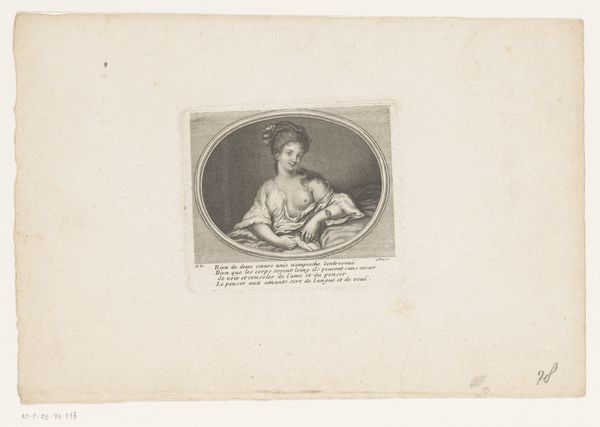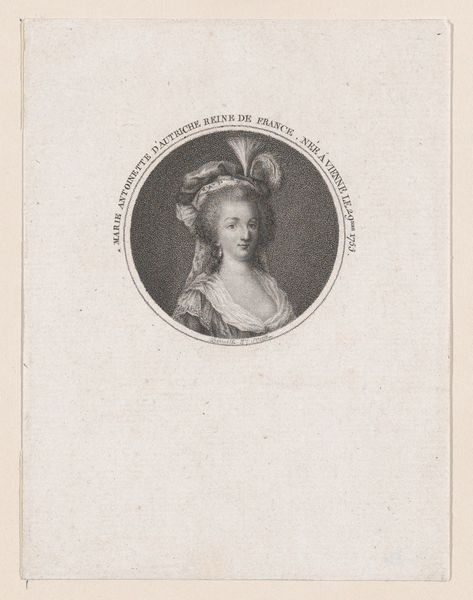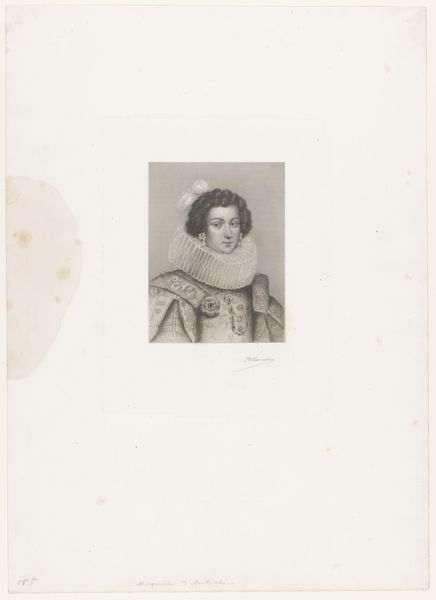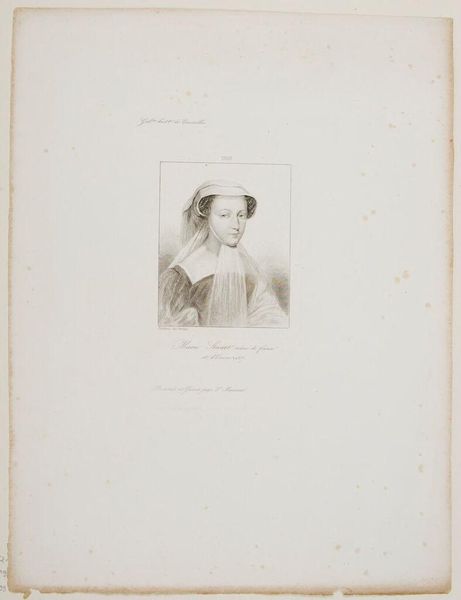
drawing, print, etching, intaglio, engraving
#
portrait
#
pencil drawn
#
drawing
# print
#
etching
#
intaglio
#
engraving
Dimensions: Plate: 8 × 6 1/16 in. (20.3 × 15.4 cm) Sheet: 13 9/16 × 10 1/16 in. (34.5 × 25.5 cm)
Copyright: Public Domain
Editor: This is "Mary, Queen of Scots," an engraving made sometime between 1825 and 1875. It’s at the Met in New York. It's so delicate, almost ethereal...what stands out to you in this image? Curator: The enduring power of Mary's image, even centuries later, is remarkable. Think about how the oval format, framing her face and elaborate ruff, echoes classical portraiture. What symbols of power do you see presented, and how might they contrast with what we know of her life? Editor: Well, the cross necklace and the feather in her hair give her a sense of nobility, but there’s also a sense of vulnerability in her eyes. Almost a premonition. Curator: Exactly. Consider the symbolism embedded within. The ruff, a symbol of status, also acts as a sort of barrier, fencing her in. Doesn’t it speak to her constrained role, a queen imprisoned? Even in a posthumous image, the visual language is rich with psychological undertones. Editor: That's a great point about the ruff being a barrier. It hadn't occurred to me that it was a visual metaphor! So even without overt symbols of royalty, her story resonates through the composition and details. Curator: It highlights how symbols gain resonance through historical context, shaping our collective memory. The image becomes a vessel, holding layers of meaning. Editor: I’ll definitely remember that way of looking at portraits! This has made me see beyond just the surface appearance. Curator: And that, is the beauty of iconography: unveiling those hidden dialogues between the image, its subject, and the viewer.
Comments
No comments
Be the first to comment and join the conversation on the ultimate creative platform.
